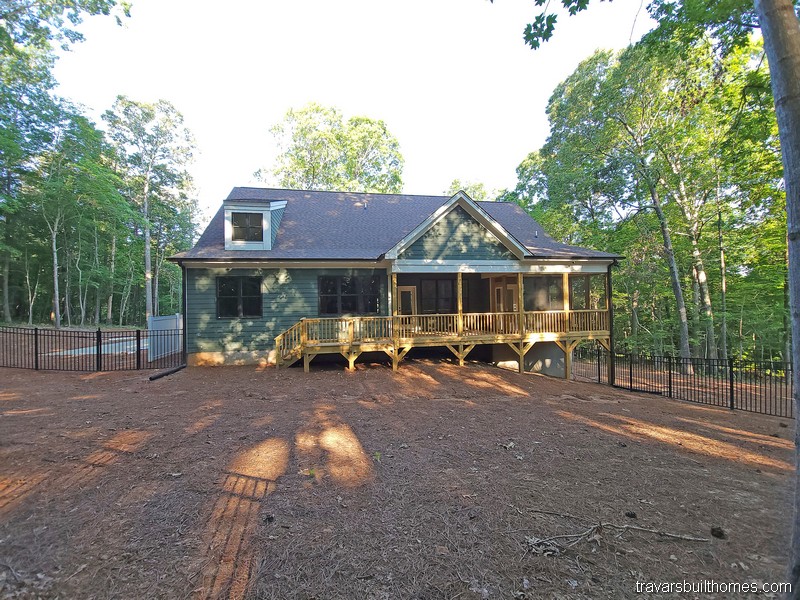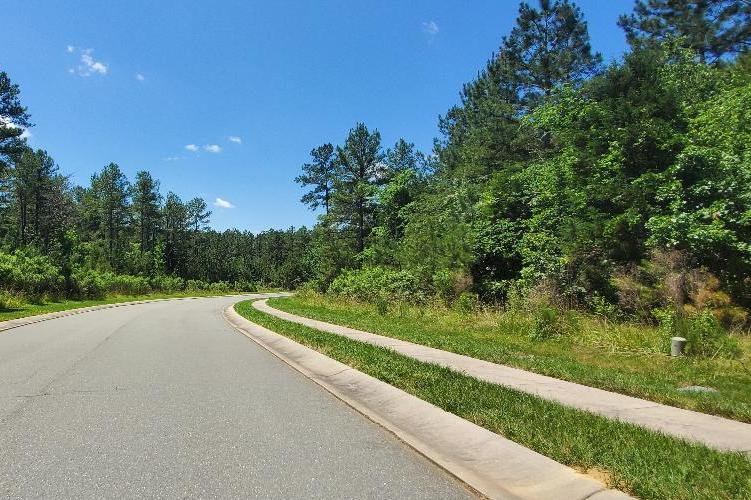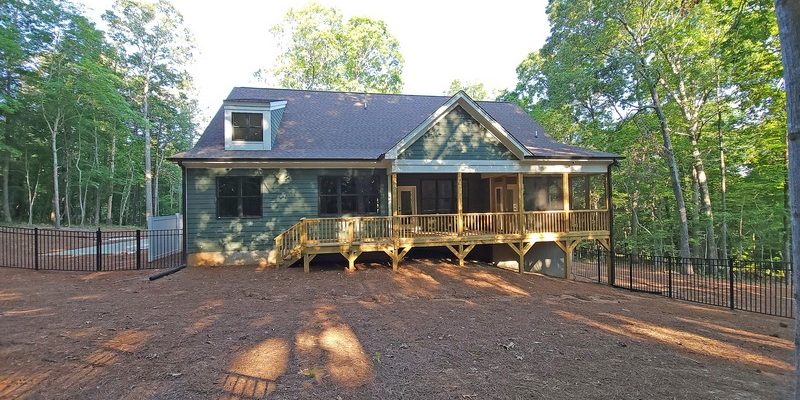Alamance County is one of the beautiful areas where Travars Built Homes builds custom homes on your land—and one of a dozen counties across central North Carolina where we help families bring their vision to life. If you’re considering building in Alamance, it’s important to understand that more than just personal preference determines where you can place your home on your lot.
Setbacks, septic systems, wells, easements, and environmental features all play a role in shaping your homesite plan. Here’s what to know—and how we help you navigate the process.
1. Setbacks:
Setbacks are the minimum required distances between your home and the edges of your lot. These requirements help maintain safety, privacy, and uniformity across neighborhoods.
In most parts of Alamance County, typical minimum setbacks are:
- 35–50 feet from the front property line
- 15–25 feet from the sides
- 25–50 feet from the rear
The specific setback distances depend on your zoning designation and whether your property is located within a municipality, an ETJ (Extra-Territorial Jurisdiction), or a rural area.
Why it matters: Setbacks define your home’s “buildable area.”

2. Septic System:
If your property doesn’t connect to a municipal sewer system, you’ll need to install a septic system. Alamance County’s Environmental Health Department will determine the best location based on:
- A professional soil evaluation
- The number of bedrooms in your home
- Required separation from wells, property lines, and structures
- Reserved space for a repair area
Why it matters: You must keep the designated area for a septic system clear—not just during construction, but long term—which means you can’t place patios, sheds, pools, or heavy driveways over it.
3. Wells:
If your home requires a private well, it must also meet specific placement requirements. In Alamance County, your well must be:
- At least 100 feet away from septic fields
- Accessible for future maintenance
Why it matters: The well location often needs to be planned in tandem with the septic layout—and both must be situated with enough distance from your home and each other to comply with regulations.
4. Easements:
Easements are areas on your property that someone else has a legal right to use. These are most commonly used for:
- Driveways or access roads to neighboring properties
- Underground utility lines
- Drainage or stormwater systems
Why it matters: You typically cannot build on or obstruct an easement.

5. Natural Features and Buffers
Alamance County features rolling countryside, creeks, and wooded areas—but these features can also bring building restrictions.
Depending on your land, you may encounter:
- Stream buffers, which restrict development near natural waterways
- Floodplain zones, where development is limited or prohibited
Why it matters: While these features add beauty to your land, they may limit where you can place your home—or require you to take additional steps during site planning and permitting.

Building in Alamance County? Travars Built Can Help.
Building on your own land comes with a lot of questions—and we’re here to help answer them. Once we understand what kind of home you’d like to build, Travars Built Homes offers an in-depth, on-site consultation to evaluate how your home can be placed for optimal layout, orientation, and use of your land’s natural features. We’ll walk your homesite with you and provide expert insight into everything from potential driveway locations to how slope can impact foundation heights.
Contact us today to schedule your homesite consultation.
Travars Built Homes has a renowned reputation across central North Carolina for exceptional quality, integrity, and service. We build on your land extending into 12 counties, including Chatham, Wake, Orange, Lee, Alamance, and surrounding areas.
Disclaimer: Requirements for well, septic, setbacks, easements, and environmental features can vary depending on your specific property and local regulations. Travars Built Homes provides guidance throughout this process, but cannot guarantee outcomes related to soil evaluations, permits, or regulatory approvals.

